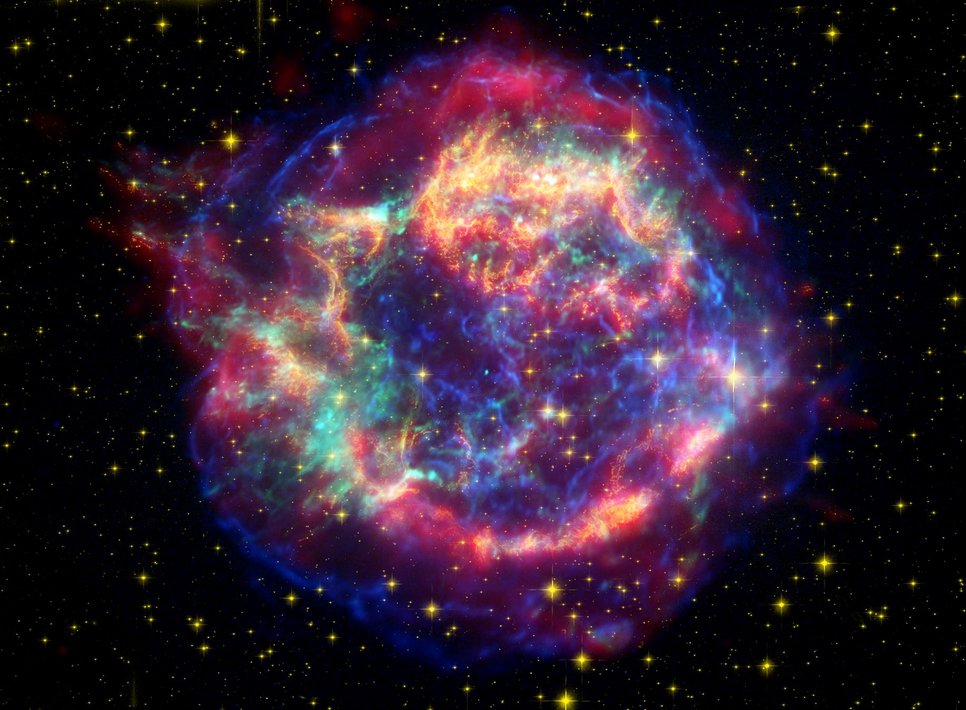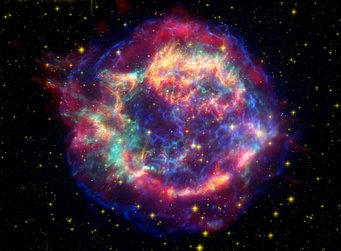More supernova dust in the solar system
Ion probe studies and improved stellar nucleosynthesis models are providing new insights into our solar system’s stardust
Until recently, cosmochemists and astrophysicists assumed that supernovae and their progenitors, the supergiant stars, contributed only little of our solar system’s stardust content. However, recent studies suggest that a significant fraction of the stardust (more than 25 percent) in the solar system comes from supernova explosions and their progenitor stars. This allows us to better understand the composition and origin of our solar system’s building blocks. Previous assumptions about the origin of the dust were still very uncertain.

The chemical elements, from carbon to uranium, are formed exclusively in stars in a set of processes known as stellar nucleosynthesis. At the end of a star's life, they are released as wind or in a violent explosion (supernovae) into the surrounding space, called the interstellar medium. In the process, a large fraction of the non-volatile elements condenses into stardust, but some of this is destroyed again later in the interstellar medium. The surviving grains were also incorporated into the planetary bodies of our solar system about 4.6 billion years ago. Since these grains existed before the formation of our solar system, they are called “presolar grains.” They display untypical, i.e. anomalous, isotope patterns for our solar system. On the basis of these characteristic anomalies in isotopic abundance, they can be detected in meteorites and cometary material. Presolar grains provide a unique opportunity for detailed laboratory studies of stellar nucleosynthesis processes and help to identify the types of stars that contributed dust to the solar system. This provides an important contribution when it comes to better understanding the origin of chemical elements and the formation of our solar system.
The newly published article in Nature Astronomy presents recent findings from studies of these presolar grains and discusses implications for future research, interstellar dust models, and the interpretation of astronomical observations of dust in the ejecta of supernova explosions.
The new findings were made possible by the improved stardust analysis methods of the NanoSIMS ion probe as well as new model calculations. The NanoSIMS ion probe measures the distribution of the abundance of certain isotopes in the submicrometer range. It does this by scanning with a focused ion beam and then using mass spectrometry to analyze the sample’s particles that are knocked out in the process.
More accurate dust models of the interstellar medium are possible
Peter Hoppe, group leader in the Department of Particle Chemistry at the MPI for Chemistry and lead author of the publication, explains that: “Knowing that a much larger fraction of stardust comes from supernova explosions provides researchers with important new parameters to create computer models of dust evolution in the interstellar medium. This is especially true when describing the survival of freshly produced supernova dust and old interstellar dust as supernova shock waves pass through.” The latter is of interest, he said, because dust plays an important role as a catalyst for chemical reactions in interstellar molecular clouds and is thought to be a building block for the formation of new planets in protoplanetary disks in young stellar systems. The astrophysicist sums up by saying that there has so far been insufficient exploration of the processes that caused stardust to mix in the local interstellar medium over extended spatial and temporal scales, and these need to be studied in more detail in future evolutionary models.
Info:
Protoplanetary disk: An annular disk of gas and dust around a protostar or similar object. (https://en.wikipedia.org/wiki/Protoplanetary_disk)
